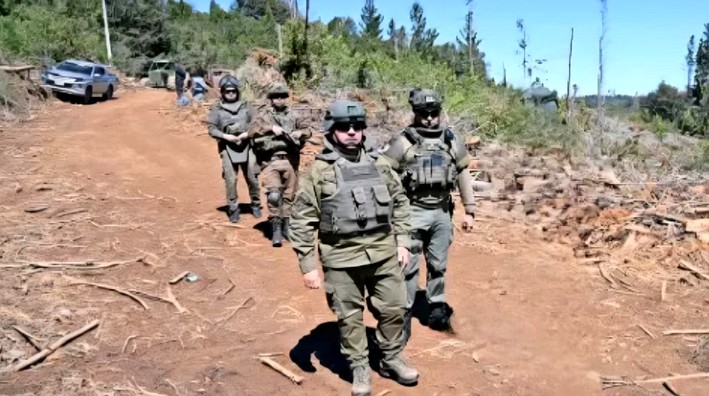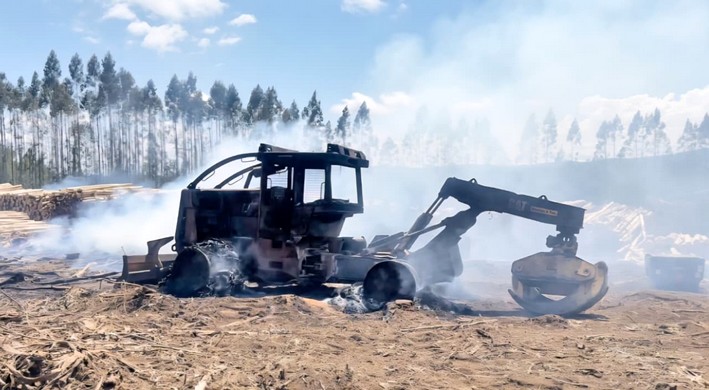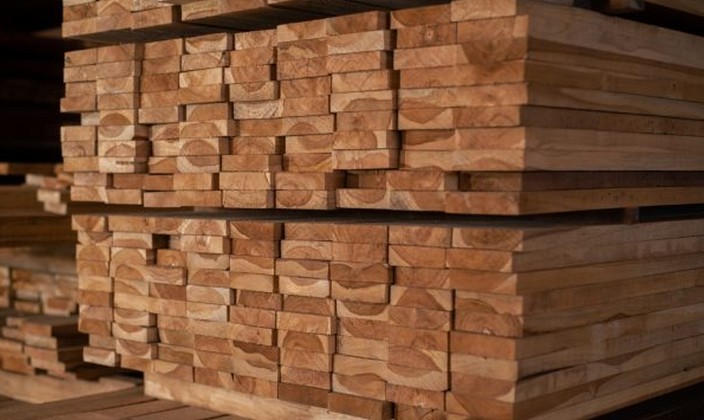The Art and Risk of Working at Heights in the Forestry Industry
In the forestry industry, some tasks require not only strength and endurance but also specialization and technical skill. Among these, the work of climbing chainsaw operators stands out as one of the most challenging and risky tasks, combining physical ability, advanced knowledge, and a strong commitment to safety.
Individuals like Eric Torres Aguilera and Miguel Bustos Silva, with years of experience at Forestal Antilemu, exemplify dedication and professionalism in a job that not only involves cutting trees at height but also ensuring the protection of infrastructure and communities from potential dangers. Their story reflects the sacrifice and importance of work that is essential to the forestry sector.
A New Chapter
Erick began his career in the forestry sector in planting and fumigation in Rauco. He recalls the physical effort that work required: "It was exhausting because we walked a lot carrying sprayers for fumigation and planting. It’s a demanding job."
Over time, he had the opportunity to learn chainsaw operation and discovered tree pruning at height. "I was already climbing, so transitioning to learning pruning and felling at height felt natural," he explains. He emphasizes that not everyone can do it without prior knowledge. With training and accumulated experience, he refined his technique and now is part of Forestal Antilemu’s S-30 special operations team.
For Erick, one of the most appealing aspects of his job is the adrenaline it involves. "It’s extreme work, but it also brings great personal satisfaction because the technical aspect means helping society, especially when removing imminent dangers like trees threatening to fall on power lines, schools, or homes."
The Risks of the Trade
The work of a forestry climber involves multiple risks. "Handling a chainsaw at height is one of the most dangerous parts. Any mistake can have fatal consequences. It’s not like being on the ground, where you can react faster," Erick notes.
To minimize risks, teamwork is key. "We’re always alert, communicating, and coordinating to ensure everything goes well," he highlights. Despite his passion for the job, he acknowledges its demanding nature. "Nowadays, young people don’t want to work in the forest. But through this job, I’ve been able to educate my children and support my family."
Unique Specialization
Miguel Bustos Silva, part of Forestal Antilemu’s S-50 special operations team, has over two decades in this high-risk profession. He has honed his expertise in cutting trees at extreme heights, reaching up to 70 meters.
He started his career at 22 in Arauco. His father, a chainsaw operator and later a machinery operator, inspired him. "From a young age, I watched my father and others in the trade, and little by little, I got into this world," Miguel recalls.
His first formal contact with forestry work was in thinning, an activity that clears forests for growth. Later, he worked in harvesting with askidder, used to drag felled trees. The inspiration to become a climber came after seeing a coworker working at height. "I saw him climbing and working up there. That image stayed with me. That’s when I said, ‘I want to learn too,’" he shares.
It wasn’t easy at first. His colleagues doubted he could master climbing and felling from heights. "I proved them all wrong. I worked hard and started practicing alongside him," he says proudly.
Thanks to his perseverance, Miguel specialized in tower work—a complex and physically demanding task—becoming one of the most experienced climbers in the region. His dedication led him to compete in Expocorma’s forestry tournaments, where he won several awards.
The Toughest Trees
A forestry climber’s job isn’t for everyone. Miguel explains that to climb and work on tall trees, good physical condition and no fear of heights are essential. "Someone with vertigo can’t do this. Since I started, I’ve never had issues with heights," he states.
Another key aspect is knowledge of different tree species. Miguel has learned to recognize the characteristics of each type of wood, which is vital for safe cutting. "Poplars, willows, and eucalyptus are the hardest to work with. The reason lies in the tree’s fiber, which is very different from pine, which is more uniform," he explains.
For Miguel, working at height is a constant adrenaline rush. "It’s exciting for those of us who truly love it. You feel something special up there. It’s like every tree you climb gives you a unique experience," he says.
Today, Miguel enjoys training new climbers, though he warns that not all aspirants are willing to learn. "I like it when young guys observe, watch what I do, and show a desire to learn," he says.
Forestry work has meant personal growth for Miguel, allowing him to improve his financial situation and plan for the future. "This field has given me stability and the chance to think about what I want to achieve for myself and my family," he concludes.

















